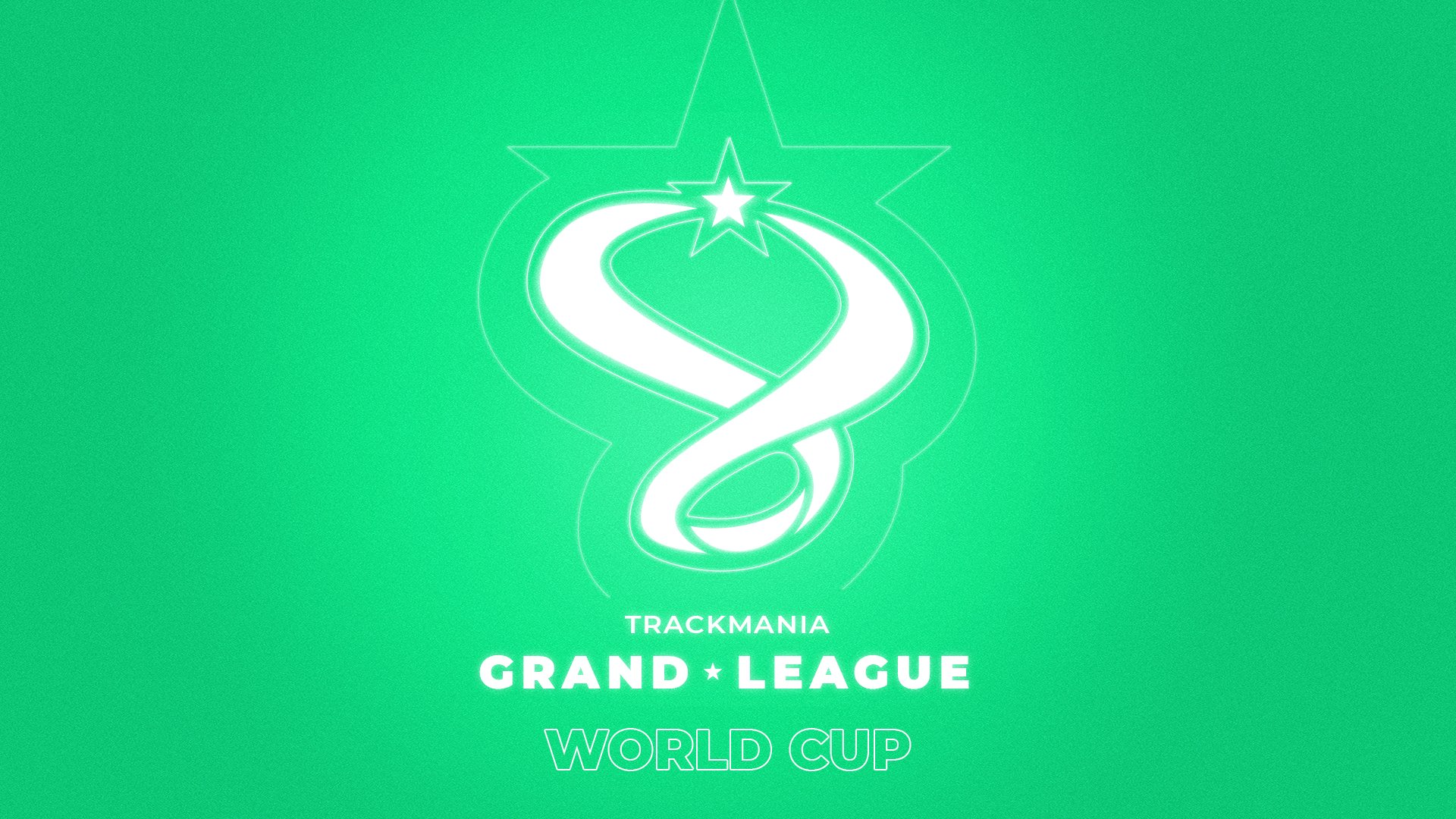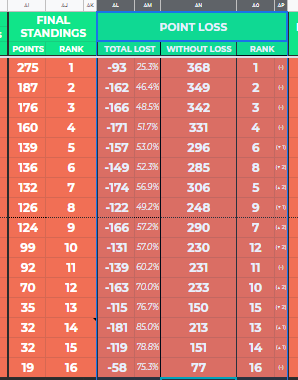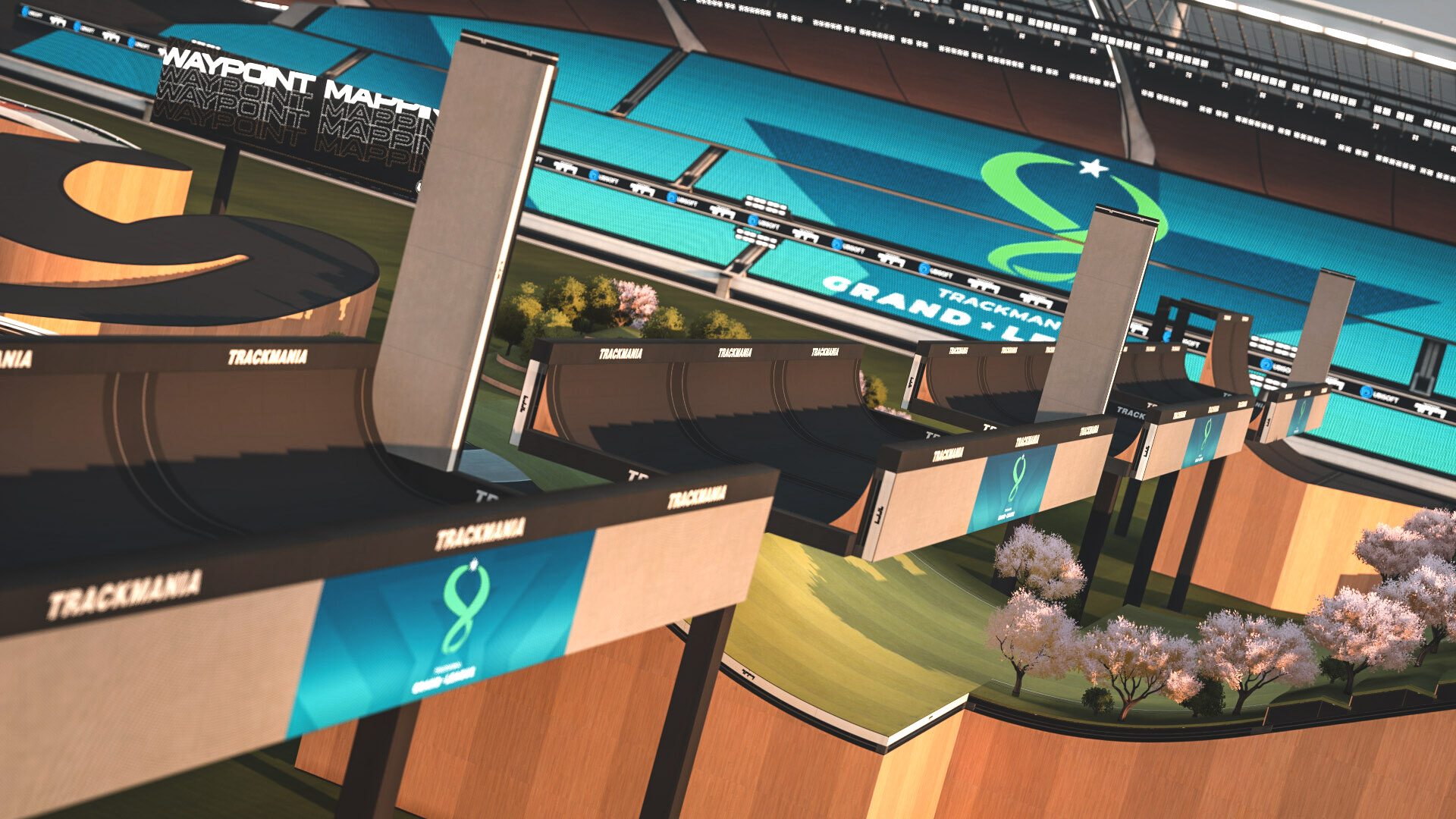
If you read this post, chances that you have seen the Trackmania Grand League (TMGL) pan out over the last couple of seasons are quite high. If not, let me break it down as quickly as possible: The Trackmania Grand League is currently the games' highest decorated competition to exist, with 16 official esports organizations backing 16 players and a so-called Trackmania Open Grand League (OGL) to determine replacements for the two lowest performing TMGL players. Which players are going to be exchanged for the upcoming season is decided in the so-called Combine. The TMGL, OGL and Combine are all played twice a year, during spring and fall.
TMGL is a fully fledged tournament, with a complete rulebook and contracts between players, teams and organizers. All that ensures the best possible experience for all the spectators of the TMGL, from players and people inside of the Trackmania community and outside of it. Ubisoft Nadeo, the studio behind the Trackmania game, is pulling the strings behind the scenes, with the experienced SoftyB in the front lines, who organized community Trackmania competitions in the past like the Trackmania World Championship and the Trackmania Pro League. To this day, a highly respected member of the amazing Trackmania community we're all part of.
With now two official seasons behind us, TMGL has not been a smashing success. Even though the TMGL was mentioned in some articles outside of the Trackmania sphere [1,2] and the fact that over 25k thousand individual viewers [3] have spectated this event, the TMGL has not been able to produce an organic growth in viewer count since its introductory Beta Season.
It has not helped that the 16 players of the TMGL have decided to formally protest the Playoff System prior to the latest TMGL season. A lack of communication and the point system have often been criticized in the past, with voices becoming louder that the community supporting this game and event is allegedly not being listened to.
After the latest TMGL fall season ended, voices in the community spoke up to criticize Ubisoft Nadeo for various actions including their involvement in the tournament. Trackmania personality Wingobear (> 22k followers) tweeted this after the end of TMGL (translated):
I'll be honest, @Trackmania can count themselves lucky to enjoy the presence of such a supportive community, when you see the amount of errors and missing elements, lack of professionalism in the organization and communication of their major event.
@Wingo_Bear - 15th of November 2020, original tweet
So, what went wrong? Why aren't there yet over 100k spectators following this event? The answer is very complicated and this post is not going to answer it. However, here are some personal observations, that I feel have had a major contribution to the public perception of the game and the competition. I'll highlight the positives and the negatives, all from the perspective of someone, who largely spectated the events and the fuzz around it.
The Step Point System
In a step, which happens once weekly for about one hour, the 16 players have to complete an endurance race for six laps each on six different maps. Now that in itself is a pretty simple concept to understand for any kind of viewer. First player to finish gets most points, last one gets the least.
The reason, why this point system has attracted controversy lies mostly in its penalty for the later maps. That looks like this:
- Map #1 and #2 have no penalties
- If you finish below the TOP 8 on map #3 and #4, you lose 50 % of your points
- If you finish below the TOP 8 on map #5 and #6, you lose 100 % of your points
With that potential penalty in place, not losing all the previously gained points by finishing in the TOP 8 surely intensifies the feel for success, while the biggest opponents might still fail and give underdogs, that might've underperformed at the first maps a higher chance of clinching step victory. Apart from any number crunching, the fact that a single mistake on the last map might undo weeks of practice and almost an hour of faultless play is the most cruel way to punish the player. This crucially changes the way the players have to play this event. There are multiple strategies the players have used to succeed in the event, including only training the last two maps of a step to avert a point-loss scenario.
To draw a comparison to something similarily cruel: A knockout format, where in each start-finish run the last player is knocked out, a single mistake can also mean it is the end of your journey. However, knockouts are most of the time driven on unknown maps (MX KO, Cup of the Day, TTC, ...) and therefore reward the players with the highest versatility, coordination, reaction and judgement. Knowledge of the blocks also helps a lot. That a knockout is not suitable for top-tier deciders - I assume - is widely accepted. Talking of top-tier-deciders: The KO-mode has also found its way into the Combine.

According to the official standings and alternative permutations (big thanks to Kem), the biggest difference in standings is only two positions between few players. The only potential takeaway here is, that Massa would have profited from the no-point-loss system and landed in the TOP 8 and therefore in the Playoffs, while Kappa would've been out. However, if there was no point loss in the point system at the time of the event, the play strategies would have most likely been very different. Hence, the true differences are unknown and can't be assessed using simple maths.
A factor, that also weighs into how the step is being played is the impact on the mentality of the player. The constant danger and the eventual point loss due to this single point of failure will bring a lot more frustration in regards to the result than if it was just the act of underperforming. In the perspective of the spectator, it is almost as equally as frustrating to see your favorite player performing well until he loses all points. This brings up a very negative feeling towards the points system, which was already expressed by many players and viewers throughout the streams in the chat - from people inside and outside of the TM community. Even some official casters had to address the chat about the controversy about the points system and seemed - even if just low-key - in agreement of disagreement with Ubisoft Nadeo on this.
This lack of agreement between the majority of the community and the organizers is not neglectable and hurts the reputation of the event. When you have own community members and even TMGL players openly criticizing this core aspect of the competition, it turns all of this immense effort in making this event look professional and transparent into realms of absurdity.
In this case I want again to highlight my observations in the twitch chats, where a lot of outsiders joined in to connect to the insiders. You didn't really need to wait long to read "How does this point system work, I don't understand" or lines like "this doesn't make sense, why are they doing this?" Usually, the Trackmania community is quick to defend, but in this case I reckon, we are united in disagreement.
Public Awareness
A few days before the TMGL Playoffs, Trackmania Journalist Eirik Holdal started a poll on Twitter, asking his followers if they knew that this sunday the TMGL Playoffs would happen, in which 80 % of his followers (including me) answered with No. A few days before the supposedly most prestigious competition event in the whole of Trackmania 80 % of people (sample size n = 338 twitter users) in the Trackmania sphere did not know it would happen. SoftyB answered the calls for more promotion, which according to him was already "more than enough" and the event "a success".
The Live Coverage
Let me start off by saying this: All of the casters I watched did an amazing job covering the TMGL. I will not criticize any of them. The main focus of my autopsy here lies in the organization of how the event was covered live.
Just like the points system, the people behind TMGL at Ubisoft Nadeo decided the appropiate strategy would again to be different from any other major esports event. Instead of setting up one casting team per language with high amount of resources and maximum professionality, it was decided to hire streamers that have casted events before. While the idea in itself is not bad, the way it was implemented was.
Each player or esports organization was assigned 1-2 casters, that covered the event using their own equipment at home and their Twitch channel. It was encouraged to root for the player in the org you were assigned to cast - that theoretically meant that there would be no neutral channel to watch if you were a neutral spectator or someone outside of the TM community. This lead to further frustration amongst irritated people in Twitch chat, that were unaware of this circumstance. At least the more popular english casters rather focussed on giving you a more general overview of all players, instead of only for their own player in the org they were casting for.
If you were to compare major events from games like Rocket League with the RLCS, you'd wonder what could've been if other decisions would've been made. A TMGL-dedicated, single casting team per language with resources like statistics, replay clips and less responsibility for handling the cameras could not only provide an even better casting experience, but also help bringing the event to the masses. It is certainly a nice gesture that so many of our favorite streamers have gotten the chance to cover the event, but that did not succeed in making the TMGL known worldwide.
The Coverage
First off, big shoutouts to Eirik Holdal, Tona, Kem and some other guys I can't remember from the top of my head for providing coverage by posting on Twitter, writing recap articles or keeping track of all statistics.
Props also to the folks behind the official TMGL Twitter, where results, reminders and highlights were posted. It showed here, that Twitter is a good medium to release quick updates about the event to as many people as possible. Otherwise, the coverage about TMGL in online-mass-media outside of Discord or the above mentioned resources was lacking. More journalists and content creators need to be contacted or involved in producing content available to the public. Both, videos and text articles about the event can have a big impact on the popularity if they appear in someone's newsfeed. Noticeably, VODs on youtube about the TMGL and other Trackmania events have shown to be quite popular, so the potential is there.
I'm working very hard to establish a news and competition site to fulfil that purpose. Check out trackmania.news for a sneek-peek!
Technical difficulties
Things can happen during the event and that is completely fine. Technical difficulties are unfortunately quite present in the new Trackmania, which is why during the TMGL some rounds had to been delayed or even restarted to give a player the chance to fix lagspikes or even rejoin from a game crash. Yes, a game as seemingly simple as Trackmania is expected to "just work without any issues", given the stability of its predecessor Trackmania Nations Forever, but it has to be remembered that Trackmania came out in July 2020. The release version is only 4 months old by the time I've written this post and this is the first TMGL season on this game, so I expect these kind of issues to be eliminated in the future.
Mappack

On a positive note, I personally feel that the quality of the maps and the general perception of them have improved. The identities seem to form more of a unity with the rest of the map compared to the previous TMGL editions, where the identities rather looked out of place and represented obnoxious obstacles to annoy the players (figuratively). The idea of map identities - I think - has been positively perceived by the majority of the people I talked with and the people that write on twitch chat.
TMGL - A failure?
Not at all. The Trackmania Grand League is still one of the most professional and prestigious tournaments ever held in the game. Never before were esports organizations, players and the TMGL organizers together so determined to make an event like this happen. Even though the potential is far from being fully exhausted, the TMGL succeeds in uniting spectators to root for their favorite player or just to watch the event. The general format - Weekly steps and maps with identities - has proven to be interesting and was adjusted to make it more enjoyable for both - players and spectators - over the course of the TMGL seasons.
The TMGL falls short in delivering its underlying promise to make Trackmania the #1 racing esports game. There is no single point of failure that kept it from reaching out to more people, but a result of many decisions that to this date only a few people in the Trackmania community seem to stand behind. One of the most controversial topics surrounding the TMGL is the points system, with the playoff format closely in second. Working out these differences between the public opinions and the visions inside the brains at Ubisoft Nadeo is the key to succeed in the long term. Pushing radical, new ideas like the penalty-based points system was not the first time a seemingly pioneering idea by Nadeo was declined by the players. A look into the recent history should be enough to see where this constant divide in opinion leads.
To end this on a positive note, I'm still very positive about the future of TMGL. I did watch each step and I rooted for my favorite players and watched their own recaps. I'm sure I'm not the only one that enjoyed the most part of the event. For the remaining bit, I have big hopes that these troubling things are on a list somewhere in an office in Paris, ready to be adressed and fixed. I have strong belief in the awesome team at Ubisoft Nadeo (shoutouts!) behind the game and event and I wish them the best in reaching their goals.
Big shoutouts to proof-readers: Kem, riolu
Edit 2020-11-19 12:35 CET: Fixed some wording errors and Rocket League is no longer a "racing game"

Lucas
Jeddix
Tony